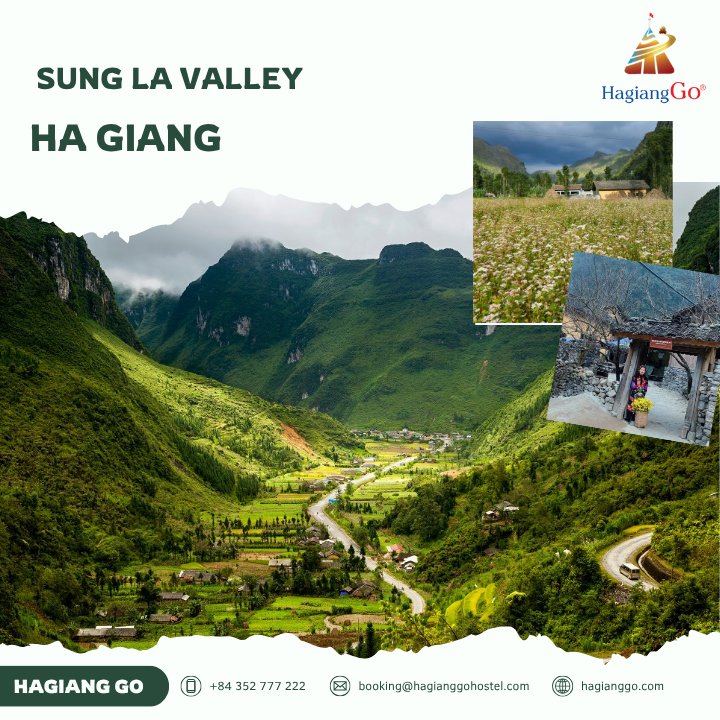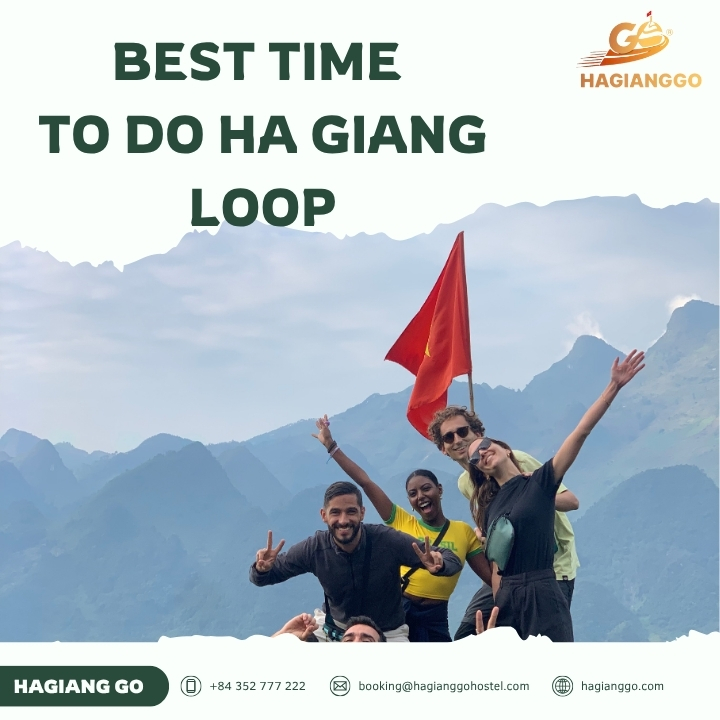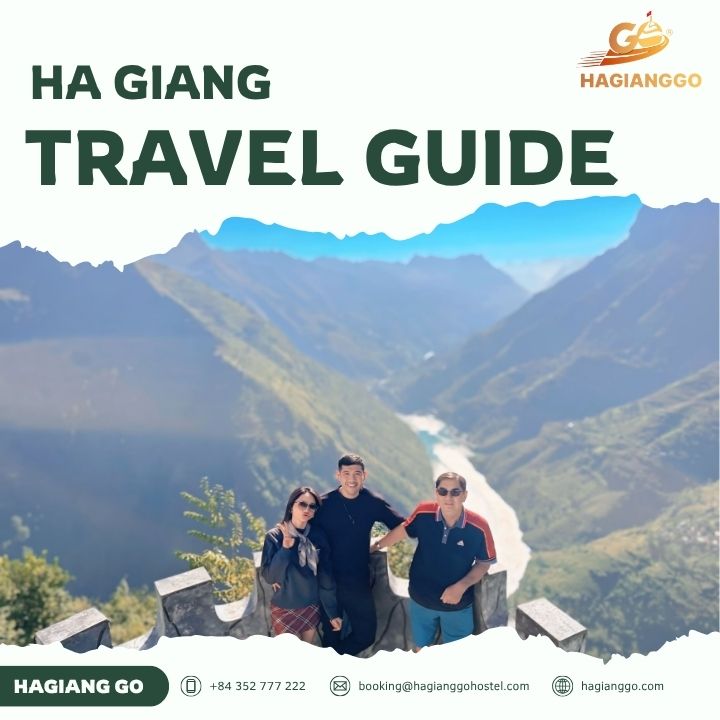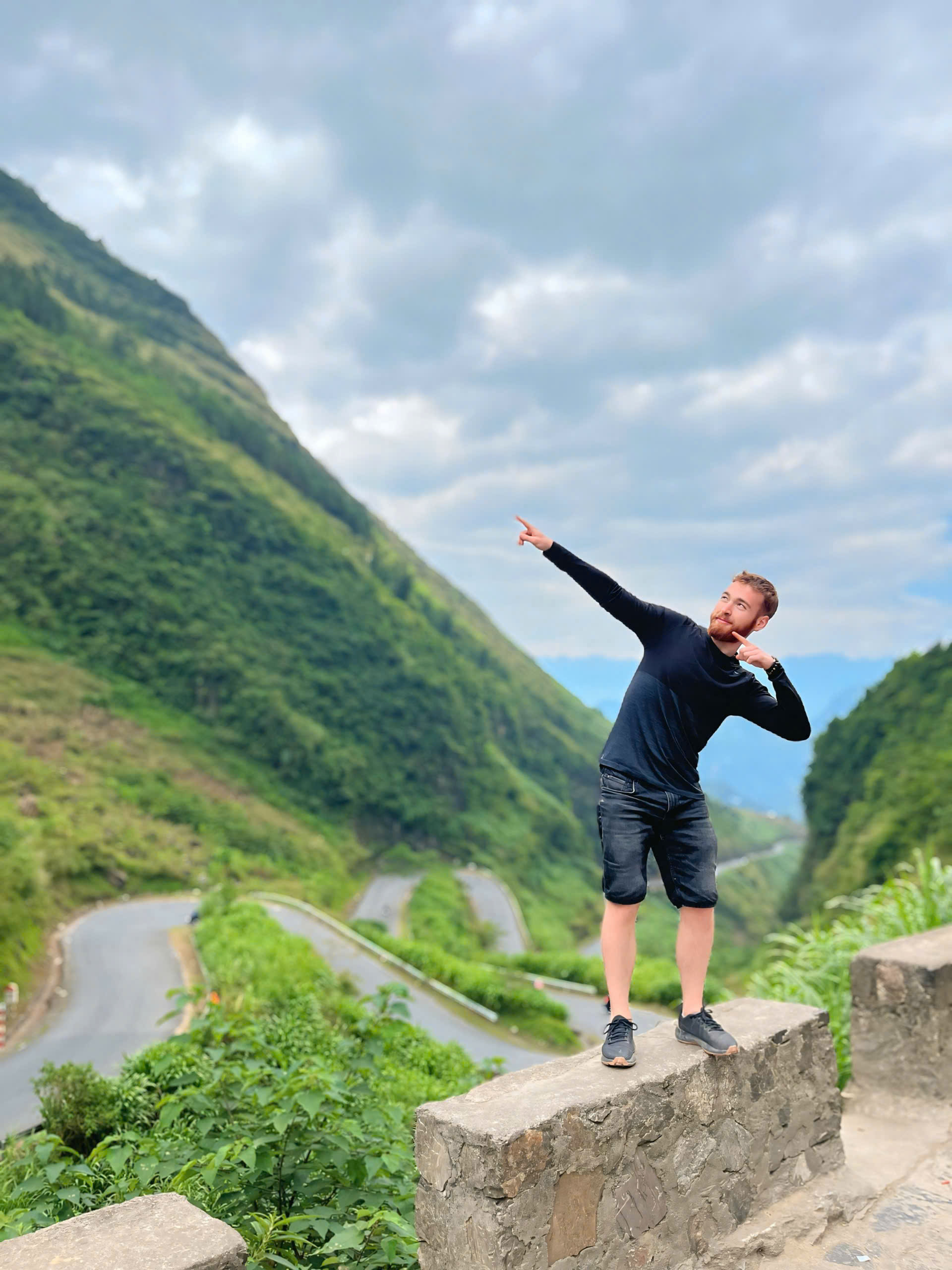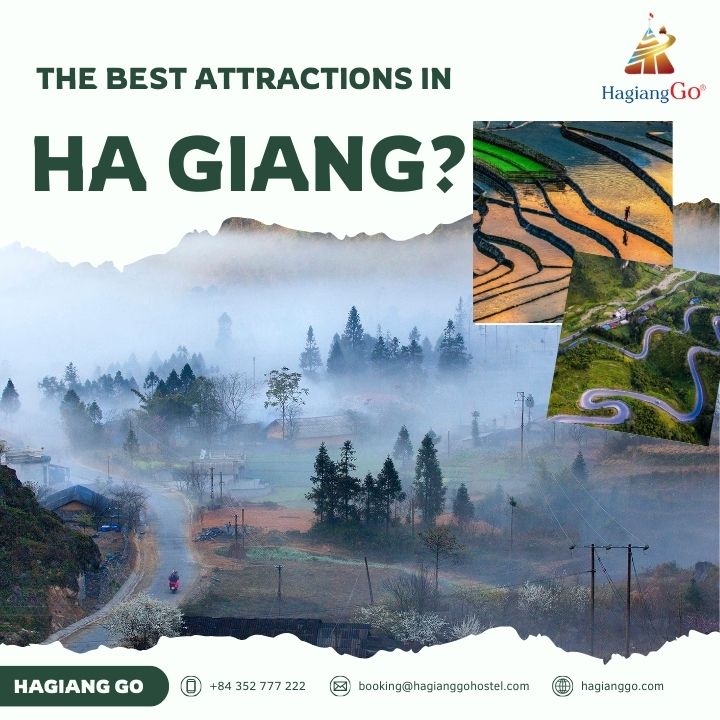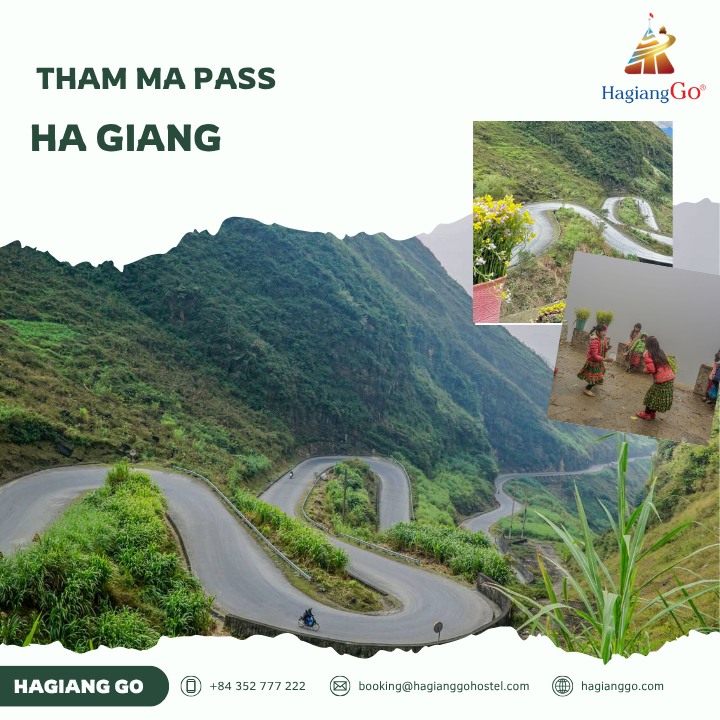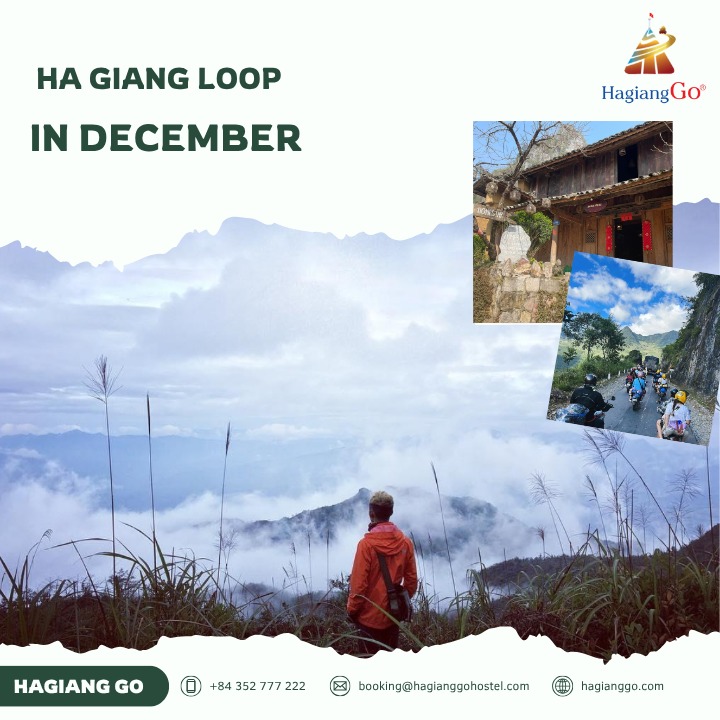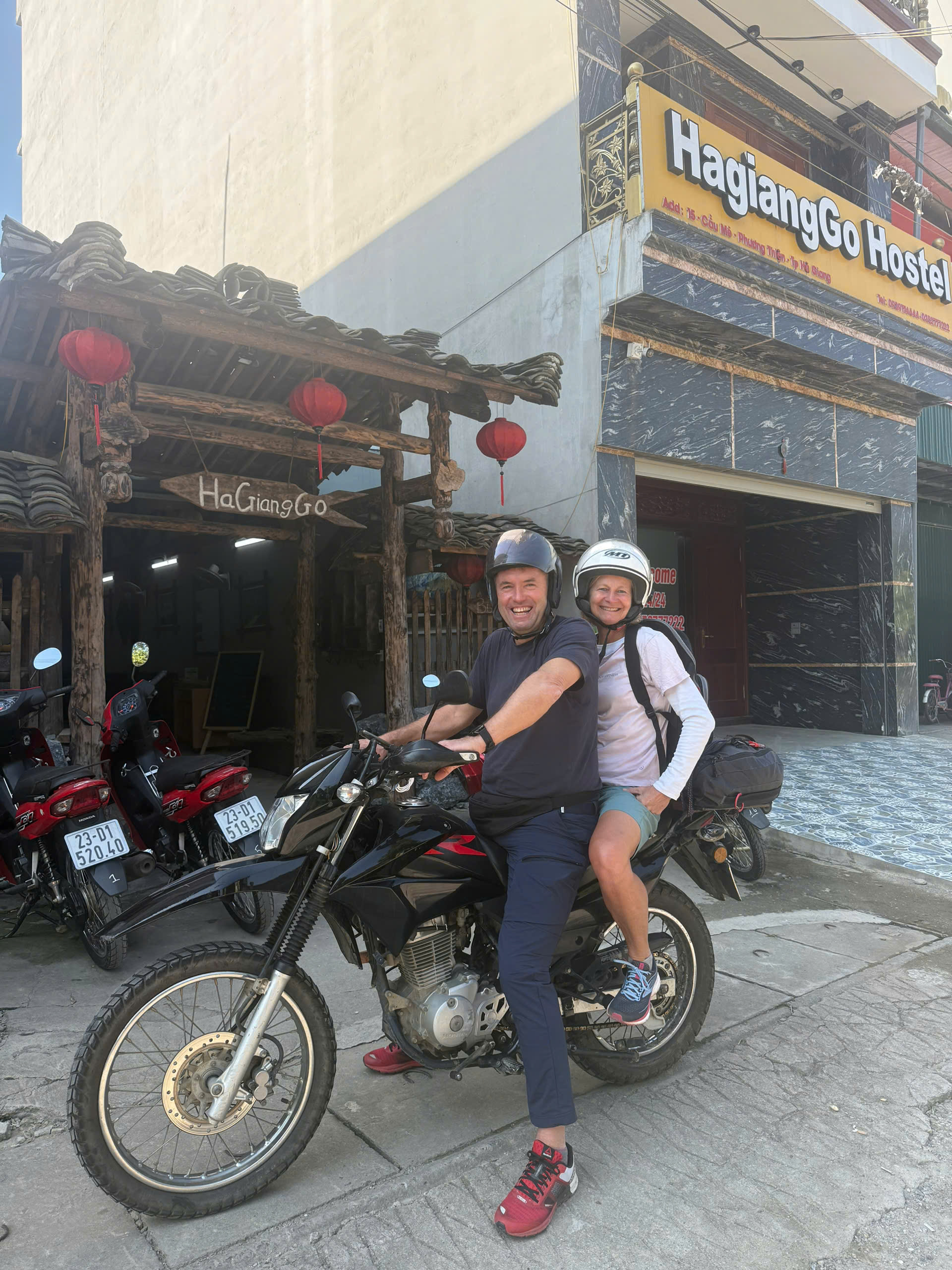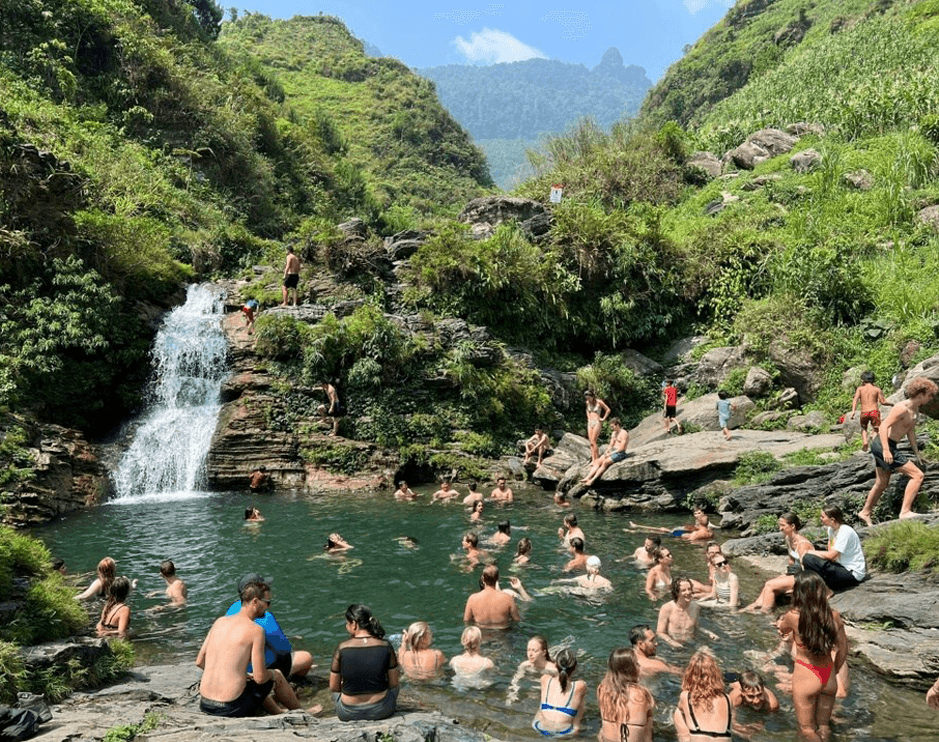1. Where is Sung La Valley located?
Sung La Valley is nestled in Sung La Commune, Dong Van District, Ha Giang Province, approximately 20 kilometers from Dong Van Town along the scenic route from Yen Minh. The valley is situated along Highway 4C, 20km from Dong Van district and 127km from Ha Giang city, making it easily accessible for travelers exploring the Ha Giang Loop.
This picturesque valley sits at an altitude of around 1,500 meters above sea level and forms part of the UNESCO-recognized Dong Van Karst Plateau Geopark. Its strategic location makes it a perfect stop for those journeying between the dramatic landscapes of northern Ha Giang, offering a serene contrast to the rugged mountain passes that define this region.
The valley's accessibility via Highway 4C ensures that visitors can easily incorporate it into their Ha Giang adventure, whether traveling by motorbike, car, or as part of an organized tour with HaGiang Go.
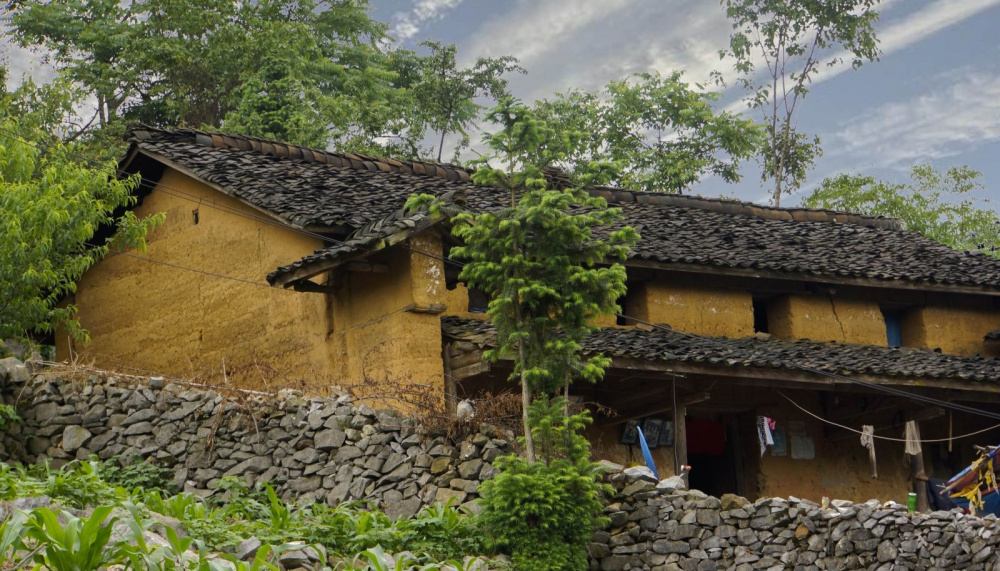
The unique architecture of the local ethnic communities - Source: tapchicongthuong.vn
2. What makes Sung La Valley special?
Ha Giang people often call Sung La "an oasis" because it is a valley in the Dong Van stone plateau, and people who like to travel often call Sung La the "rose flower" of the stone plateau. This "oasis" nestled in the rocky plateau is also known as the "rose of the province", a nickname that perfectly captures its contrasting softness amidst the jagged limestone mountains.
The valley's unique charm lies in its harmonious blend of natural beauty and human cultivation. Stone fences crafted from local limestone create geometric patterns across the landscape, while carefully tended flower gardens burst with color throughout the seasons. Terraced fields cascade down gentle slopes, creating a patchwork of green that stands in beautiful contrast to the surrounding rocky terrain.
Sung La Valley is particularly renowned for its seasonal transformations. In spring, the valley comes alive with delicate peach and plum blossoms that paint the landscape in soft pastels. However, it's during autumn that Sung La truly earns its "rose" nickname, when buckwheat flowers bloom in magnificent displays of pink and white, creating a carpet of color that photographers and nature lovers find irresistible.
The valley's beauty is enhanced by traditional trinh tuong houses with their distinctive earthen walls, wooden doors, and yin-yang tile roofs that dot the landscape like architectural gems, each telling a story of generations of mountain dwellers who have called this place home.
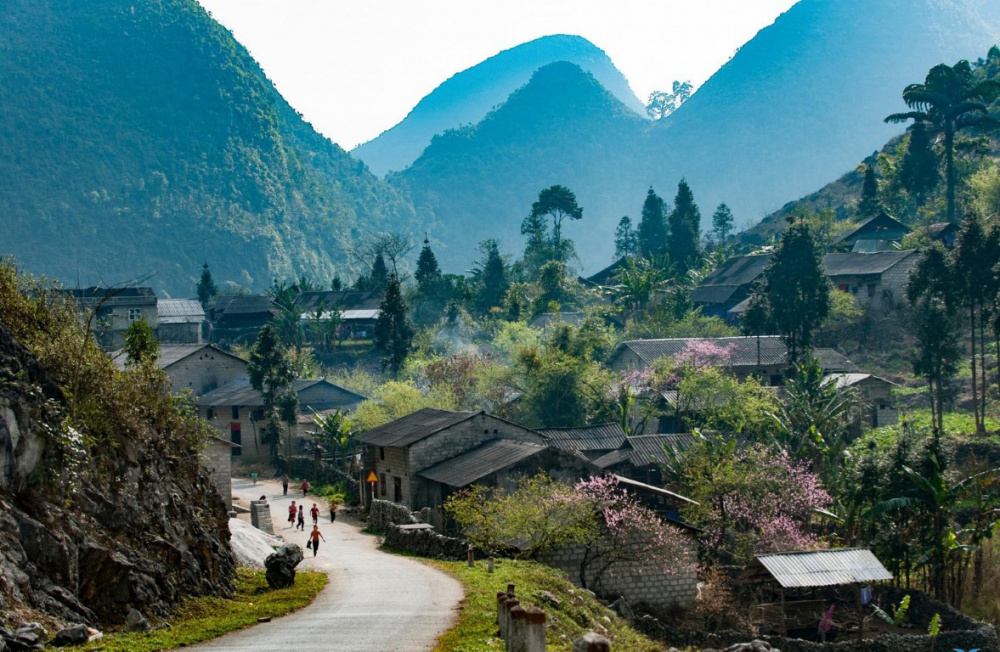
Tucked away in Sung La Valley, Lung Cam Village is a small cultural gem of over 60 households - Source: tapchicongthuong.vn
3. Cultural significance and the story of Pao
This beautiful small village consists of more than 60 households living in Sung La commune, and the village has a history of more than 100 years. The valley is home to H'mong, Lo Lo, and Tay ethnic groups, who have maintained their traditional customs, clothing, and architectural styles through generations of mountain living.
The most famous cultural landmark in Sung La Valley is the "House of Pao" (Nhà của Pao), a traditional H'mong home that gained international recognition as the filming location for the award-winning Vietnamese film The Story of Pao. Located in Lung Cam Village, a 100-year-old village nested in Sung La Commune, the house is popular as the filming location where the movie The Story of Pao was filmed.
The movie follows Pao, a Hmong girl living in a poor village on the rocky plateau, and her journey to find her mother becomes a journey of self-discovery, where she learns about family, love, and life. This powerful film brought international attention to the beauty and cultural richness of Sung La Valley, making it a pilgrimage site for cinema enthusiasts and cultural travelers alike.
Visitors to the House of Pao can tour the traditional dwelling and its peaceful courtyard, gaining insight into H'mong architectural techniques and daily life. The house features special walls made from soil mixed with straw, about 40-60cm in thickness, demonstrating the ingenuity of traditional mountain construction methods.
The valley's cultural significance extends beyond cinema. Daily life here revolves around traditional activities such as farming, weaving, and embroidery, offering visitors authentic glimpses into ethnic minority cultures that have remained largely unchanged for centuries. The majority of the ethnic groups here are the Hmong, which consist of more than 80%, followed by the Lo Lo ethnic and Han.
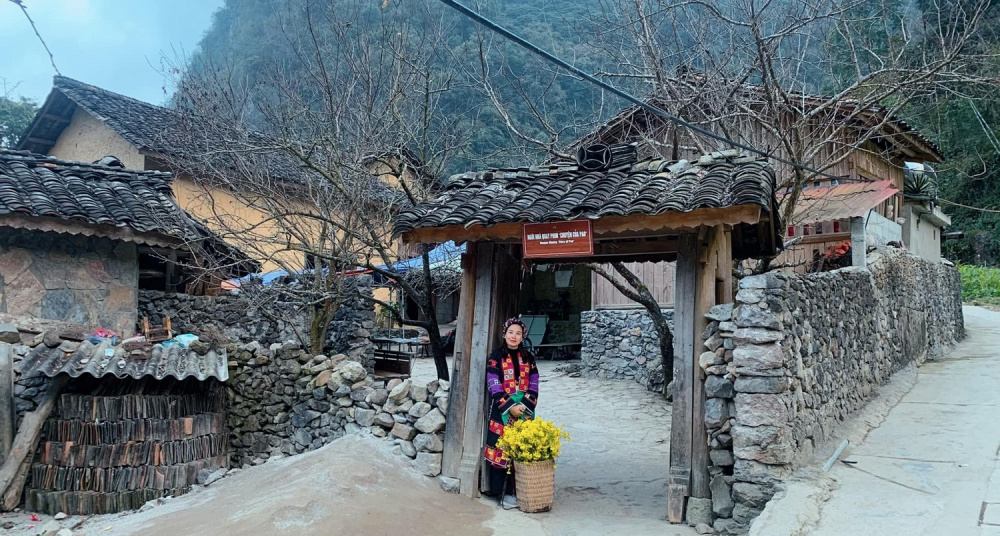
House of Pao - Source: tapchicongthuong.vn
4. Things to see and do in Sung La Valley
Sung La Valley offers a wealth of experiences for travelers seeking both natural beauty and cultural immersion. The centerpiece of any visit is exploring the Lung Cam cultural village, where preserved traditional homes maintain their authentic atmosphere and architectural integrity.
Photography enthusiasts will find endless subjects in the valley's trinh tuong houses, with their distinctive earthen wall architecture, intricately carved wooden doors, and traditional yin-yang tile roofs. These structures represent centuries of architectural evolution adapted to the mountain climate and available materials.
Seasonal flower viewing is perhaps the valley's greatest attraction. During spring months, peach and plum blossoms create delicate displays of pink and white, while autumn brings the famous buckwheat flowers (tam giac mach) that transform the valley into a pink paradise. Mustard flowers add splashes of yellow throughout the growing season, creating a constantly changing palette of natural color.
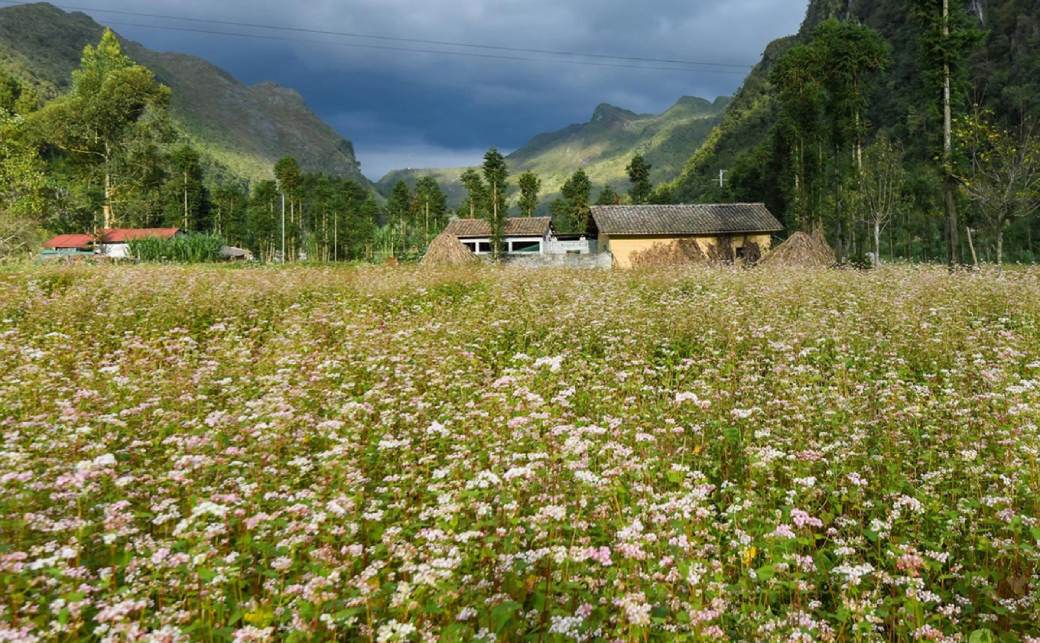
In Sung La Valley , the buckwheat flowers bloom as if to welcome every traveler - Source: Vnexpress
Local markets operate on specific days throughout the week, offering visitors the chance to observe traditional commerce and purchase authentic handicrafts, local produce, and traditional foods. Local Hmong sell their local produce such as walnuts, groundnuts, pumpkin seeds, dried bamboo shoots, rice wine, corn wine, and souvenirs.
Cultural experiences include opportunities to try traditional food and herbal tea offered by local families, observe traditional weaving and embroidery techniques, and learn about the daily rhythms of mountain agriculture. Many families welcome visitors into their homes, providing intimate glimpses into traditional mountain life.
Walking tours through the valley reveal hidden corners where traditional life continues unchanged. Stone fences, flower gardens, and terraced fields create a living museum of traditional mountain agriculture and settlement patterns.
5. Tips for visiting Sung La Valley
5.1. Best time to visit
The optimal time to visit Sung La Valley is between October and April, during the dry season when weather conditions are most favorable for travel and outdoor activities. This period coincides with the valley's most spectacular blooming seasons, particularly the famous autumn buckwheat flowers that create the valley's signature pink landscapes.
Spring visits (March-April) offer mild temperatures and peach blossom displays, while autumn (October-November) provides the most dramatic flower shows and comfortable hiking weather. Winter visits are possible but require warm clothing due to the high altitude.
5.2. Getting to Sung La Valley
Sung La Valley sits perfectly along the Ha Giang Loop route between Yen Minh and Dong Van, making it an ideal stop for motorbike adventurers and car travelers alike. HaGiang Go offers both motorbike rentals and private car services, ensuring safe and comfortable transportation to this remote destination.
For independent travelers, the valley is easily accessible via Highway 4C, with clear signage marking the turnoff to Lung Cam Village and the House of Pao. The road conditions are generally good, though mountain driving experience is recommended for those choosing to self-drive.
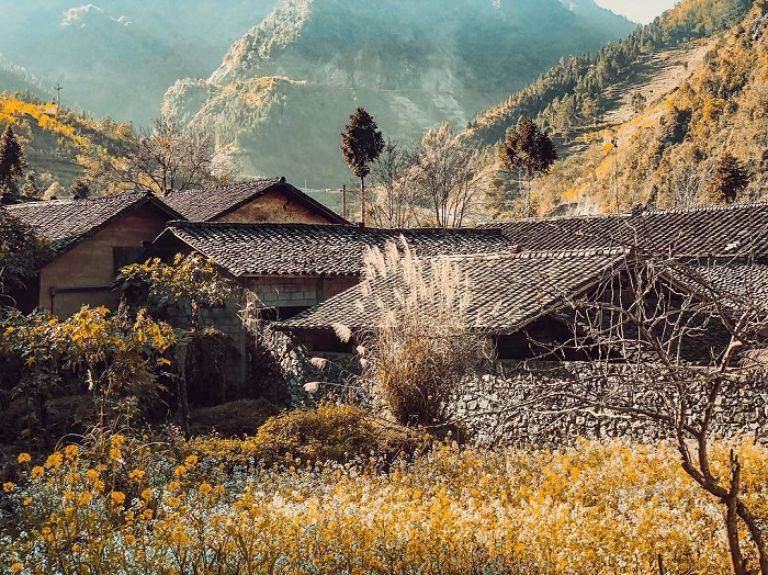
Source: hagiangamazingtour.vn
5.3. What to bring
Essential items for your Sung La Valley visit include a warm jacket (high altitude can be surprisingly cool even in summer), sun protection including sunscreen and hat, a good camera for capturing the valley's beauty, and cash for entrance fees, souvenirs, and homestay snacks. The entrance fee is 10,000 VND to visit the small village.
Comfortable walking shoes are recommended for exploring the village paths and flower fields, while a small backpack helps carry water and snacks for longer explorations.
5.4. Cultural etiquette
Respecting local customs and traditions is essential when visiting Sung La Valley. Always ask permission before photographing people, particularly elders and children, as this shows respect for local privacy and cultural sensitivities. Avoid picking flowers or entering homes uninvited, as these actions can damage the natural environment and disrupt daily life.
When visiting the House of Pao and other cultural sites, maintain quiet, respectful behavior that honors the significance of these locations to local communities. Small purchases of local products help support village economies and demonstrate appreciation for local craftsmanship.
6. Combine with nearby attractions
Sung La Valley's location makes it an ideal base for exploring multiple attractions within the Dong Van Karst Plateau Geopark. HaGiang Go specializes in creating comprehensive cultural circuits that maximize your time in this remarkable region.
1 - Lung Cu Flag Tower, located 20-30 kilometers north of Sung La Valley, offers visitors the chance to stand at Vietnam's northernmost point while enjoying panoramic views across the border into China. This national monument provides a perfect complement to Sung La's cultural focus, adding historical and political significance to your Ha Giang adventure.
2 - Dong Van Ancient Town represents another essential stop, where French colonial architecture meets traditional ethnic markets in a perfectly preserved highland setting. The town's weekend markets burst with color and culture, offering excellent opportunities to observe traditional commerce and purchase authentic handicrafts.
3 - Ma Pi Leng Pass provides some of Vietnam's most dramatic mountain scenery, with the winding road offering spectacular viewpoints over the Nho Que River valley. This engineering marvel creates a perfect contrast to Sung La's gentle beauty, showcasing the diverse landscapes that define Ha Giang Province.
4 - Vuong Family Mansion tells the fascinating story of the "H'mong King" and offers insights into the complex history of ethnic relations in northern Vietnam. This well-preserved palace demonstrates the wealth and power that some ethnic leaders achieved during the colonial period.
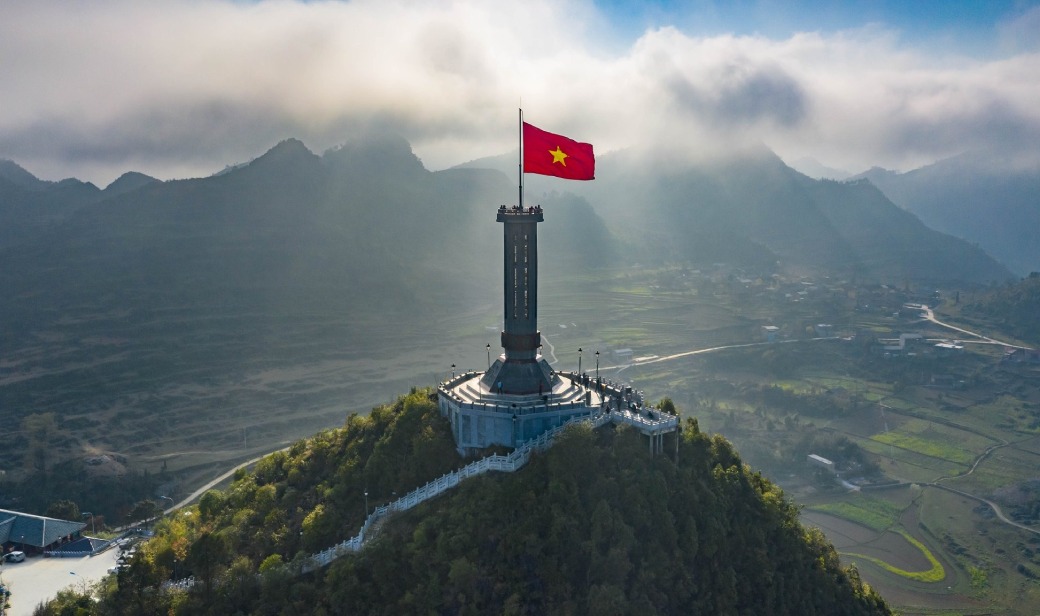
Lung Cu Flag Tower - Source: hanoitourist.vn
HaGiang Go can customize 2-3 day cultural circuits that seamlessly combine these attractions, ensuring you experience the full diversity of Ha Giang's natural beauty and cultural richness. Our local expertise ensures optimal timing, comfortable accommodations, and meaningful cultural interactions throughout your journey.
7. Practical information for your visit to Sung La Valley
Planning your Sung La Valley adventure requires consideration of practical details that ensure a smooth and enjoyable experience. The valley's remote location means that planning is essential, particularly regarding accommodations and transportation.
- Accommodation options in the valley itself are limited but authentic, with several homestay opportunities available through local families. These experiences provide intimate glimpses into traditional mountain life while supporting local economies. For those preferring hotel accommodations, Dong Van Town offers several options within easy reach of the valley.
- Transportation requires careful consideration of your comfort level and experience with mountain driving. HaGiang Go offers multiple options, from self-guided motorbike rentals to fully guided tours with experienced drivers who know the mountain roads intimately.
- Weather considerations are crucial, as mountain weather can change rapidly. Even during warm seasons, temperatures can drop significantly in the evening, making warm clothing essential. Rain gear is recommended during wet season months, though the dry season offers the most predictable conditions. (Refer to the article: The weather in Ha Giang all year round.)
- Photography guidelines should be observed to respect local privacy and cultural sensitivities. While the valley's beauty invites constant photography, always ask permission before photographing people and avoid disrupting daily activities for the sake of images.
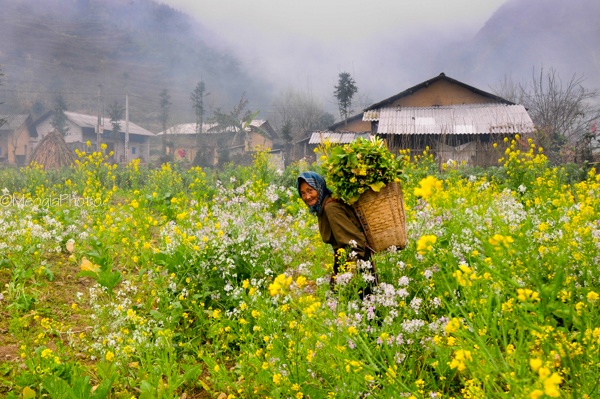
The local people in Sung La Valley - Source: thanhnien.vn
8. Where simplicity becomes profound
In Sung La Valley, time slows to match the rhythm of traditional mountain life. The silence between bird songs, the gentle rustle of buckwheat flowers in the mountain breeze, and the simplicity of village life create impressions deeper than any dramatic mountain pass or rushing waterfall.
This remarkable valley offers something increasingly rare in our connected world: the opportunity to experience life at its most fundamental level, where beauty emerges from the harmony between human communities and their natural environment. The earthen houses, stone fences, and flower gardens represent centuries of adaptation and cultural evolution, creating a landscape that feeds both the eyes and the soul.
Sung La Valley slopes gently amidst limestone mountain ranges, and upon reaching Dong Van town, you can admire Sung La Valley from above, with its buckwheat flower fields painting the landscape in shades of pink and white. This perspective reveals the valley's true character: a masterpiece of natural beauty enhanced by generations of careful human stewardship.
Join us at HaGiang Go to discover Sung La Valley - a quiet masterpiece in the heart of Ha Giang Province, where every path leads to beauty, every conversation reveals wisdom, and every moment creates memories that last a lifetime. Let us guide you beyond the ordinary tourist experience to the authentic heart of northern Vietnam's most poetic valley.
